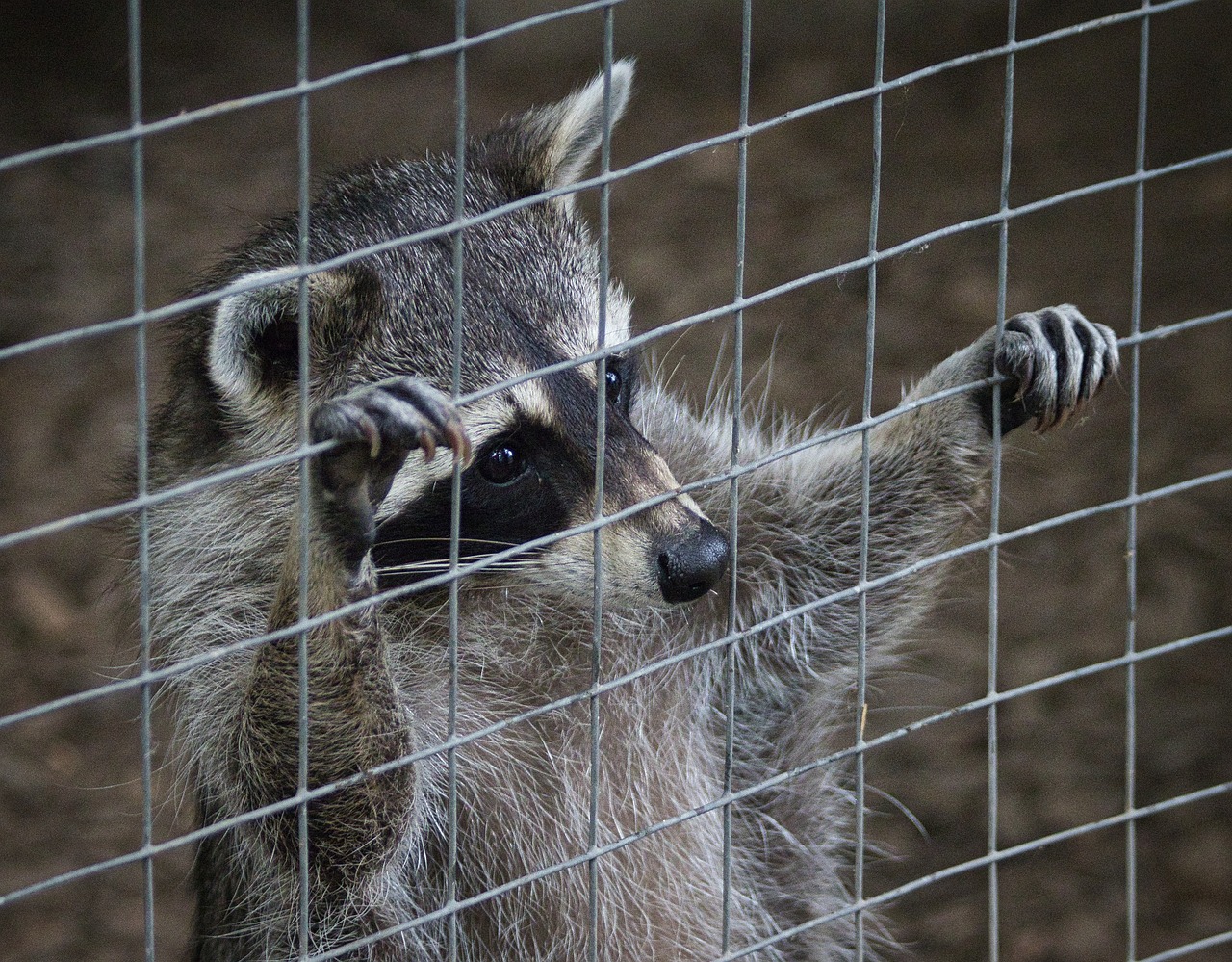Raccoons are intelligent and adaptable creatures that often find themselves in urban and suburban areas, leading to conflicts with humans. While coexisting peacefully with wildlife is ideal, there are situations where raccoon relocation becomes necessary. However, before you attempt to relocate a raccoon, it’s crucial to understand the ethical, legal, and practical aspects involved.
In this comprehensive guide, we will explore the various factors that determine how far you should relocate a raccoon and provide valuable insights into responsible raccoon management.
Understanding Raccoon Behavior
To make informed decisions regarding raccoon relocation, it’s essential to understand the behavior and habits of these creatures. Raccoons, scientifically known as Procyon lotor, are highly adaptable and opportunistic omnivores. Here are some key points to consider:
Nocturnal Behavior: Raccoons are primarily nocturnal, meaning they are most active during the night. This behavior can sometimes make it challenging to spot them during the day.
Diet: Raccoons have a diverse diet, feeding on fruits, vegetables, insects, small mammals, and even scavenging from garbage cans. Their adaptability to various food sources makes them common visitors in urban areas.
Home Range: Raccoons are territorial creatures with a home range of approximately 1 to 10 square miles, depending on the availability of food and shelter. They may establish dens in hollow trees, abandoned burrows, or man-made structures.
Social Structure: Raccoons are solitary animals, but they occasionally interact with others in non-aggressive encounters. They are not truly social creatures like wolves or meerkats.
Reproduction: Raccoons breed in late winter or early spring, and after a gestation period of about 63 days, females give birth to a litter of typically 3 to 5 kits. Mother raccoons are highly protective of their young.
For a more in-depth understanding, consider reading Raccoons: A Natural History, which provides detailed insights into their behavior and habits.
Reasons for Raccoon Relocation
Raccoons often come into contact with humans due to the rapid urbanization of their habitats. While these encounters can be benign, there are situations where raccoon relocation may be necessary. Some common reasons include:
Property Damage: Raccoons can damage roofs, attics, gardens, and trash cans while searching for food and shelter. This damage can be costly to homeowners.
Health Concerns: Raccoons can carry various diseases, including rabies and distemper, which can pose a risk to pets and humans. In such cases, relocation is often considered a safety measure.
Nuisance Behavior: If raccoons repeatedly visit a property and become a nuisance, it may be necessary to relocate them to prevent further conflicts.
Concern for Wildlife: In some instances, people may want to relocate raccoons to protect local wildlife, such as nesting birds or endangered species.
To safely relocate raccoons, you’ll need reliable trapping equipment. Consider the Havahart Live Animal Cage Trap, which is a humane and effective trap for capturing raccoons without harming them.
The Ethical Dilemma
Raccoon relocation presents an ethical dilemma for several reasons:
Survival Challenges: Relocated raccoons face numerous survival challenges in unfamiliar territories. They may struggle to find food, water, and suitable shelter. This can lead to stress, starvation, and increased vulnerability to predation.
Spread of Disease: Relocating raccoons from one area to another can potentially spread diseases to new populations if the relocated animals are carriers.
Disruption of Social Bonds: Raccoons are solitary animals, but mothers often raise their young in established dens. Separating families during relocation can cause distress and disrupt natural behaviors.
Competition with Resident Wildlife: The introduction of relocated raccoons can lead to increased competition for resources with resident wildlife, potentially harming local ecosystems.
Given these ethical concerns, it is crucial to weigh the decision to relocate a raccoon carefully and explore alternatives, such as raccoon deterrence and prevention, before resorting to relocation.
For ethical wildlife management practices, consider the Wildlife Ethics Manual, which provides a comprehensive guide to ethical wildlife management and relocation practices.
Legal Considerations
Raccoon relocation is subject to various laws and regulations that vary by region. It is essential to be aware of the legal considerations in your area before attempting any relocation. Here are some key points to consider:
Permits: In many places, you may need a permit to relocate raccoons legally. These permits are typically issued by wildlife agencies or departments and may have specific requirements and restrictions.
Distance Requirements: Some jurisdictions may specify the minimum distance you must relocate a raccoon from its capture location to prevent it from returning.
Relocation Restrictions: Certain areas may have restrictions on raccoon relocation due to concerns about disease transmission or ecological impact. Always check with local authorities to ensure compliance with regulations.
Humane Trapping: Laws often require the use of humane trapping methods that minimize harm and stress to the raccoon during capture and transportation.
Failure to adhere to these legal requirements can result in fines and penalties. For more information, consider the Wildlife Law Guidebook, which covers wildlife laws and regulations to help you stay informed.
How Far Should You Relocate a Raccoon?
Determining the appropriate distance for raccoon relocation is a critical consideration. The distance depends on several factors, including local regulations, the raccoon’s behavior, and the specific circumstances. Here are some guidelines to help you decide how far you should relocate a raccoon:
Local Regulations: Start by checking your local wildlife regulations or contacting wildlife authorities to understand any distance requirements or restrictions specific to your area.
At Least 10 Miles: To prevent raccoons from returning to their capture location, experts generally recommend relocating them at least 10 miles away. This distance is often sufficient to discourage their return.
Consider Habitat Quality: When choosing a relocation site, consider the suitability of the habitat. Ensure that the new area provides access to food, water, and shelter to increase the raccoon’s chances of survival.
Avoid Urban Areas: It is generally advisable to avoid relocating raccoons to urban or heavily populated areas, as they are more likely to encounter conflicts and face survival challenges.
Familiarize Yourself with the Area: Before releasing a raccoon, familiarize yourself with the chosen relocation site to ensure it is appropriate and free from potential hazards.
Release with Care: When releasing a raccoon, do so quietly and gently. Open the trap or release container and allow the raccoon to exit at its own pace. Do not force or rush the process.
Monitor from Afar: After release, monitor the raccoon from a distance to ensure it successfully adapts to its new environment. If it appears to be struggling or in distress, consider contacting local wildlife experts for advice.
Remember that raccoons are territorial animals, and relocating them may not always be the best solution. If you suspect a raccoon is causing problems on your property, consider alternative methods of raccoon management, such as deterrents and preventive measures.
Relocation Methods and Safety Measures
If you decide that raccoon relocation is the best course of action, it’s essential to follow humane and safe methods. Here’s a step-by-step guide to raccoon relocation:
Use Humane Traps: Select a humane trap that does not harm the raccoon during capture. Live-capture traps with doors that close gently are commonly used. The Tomahawk Live Trap is a reliable option.
Bait the Trap: Use appropriate bait to lure the raccoon into the trap. Common baits include cat food, marshmallows, or peanut butter. Ensure the bait is securely attached to the trigger.
Set the Trap Properly: Place the trap in an area frequented by the raccoon, such as near its den or along its known travel path. Check local regulations for trap placement guidelines.
Check the Trap Regularly: It is crucial to check the trap frequently to minimize stress to the raccoon. Trapped animals can become agitated or dehydrated if left unattended.
Handle with Care: When handling the trapped raccoon, wear Wildlife Handling Gloves to protect yourself from potential diseases or bites. Approach the trap calmly and avoid sudden movements or loud noises.
Prepare for Transport: Cover the trap with a cloth or blanket to reduce stress to the raccoon during transportation. Ensure the trap is securely fastened in your vehicle. An Animal Transport Cage can be very useful for this purpose.
Choose a Suitable Release Site: Select a relocation site that meets the distance requirements and provides a suitable habitat for the raccoon’s needs.
Release the Raccoon: Open the trap or release container gently to allow the raccoon to exit at its own pace. Do not attempt to handle or force it out.
Wash and Disinfect: After handling the trap, thoroughly wash your hands and disinfect the trap to minimize the risk of disease transmission.
Dispose of Trapping Equipment: If you no longer need the trap, dispose of it properly or store it safely for future use.
Raccoon Deterrence and Prevention
In many cases, raccoon conflicts can be prevented or mitigated without the need for relocation. Here are some effective raccoon deterrence and prevention methods:
Secure Trash and Food Sources: Raccoons are attracted to food, so secure your trash cans and compost bins with tight-fitting lids. The Toter Bear-Tight Trash Can is a great option to keep food sources secure. Avoid leaving pet food outside overnight.
Seal Entry Points: Inspect your home for potential entry points and seal any openings that raccoons could use to gain access to your attic, crawl spaces, or basement. Use Stuf-Fit Copper Mesh to seal these openings effectively.
Install Motion-Activated Lights: Raccoons are nocturnal and are often deterred by sudden light. Install Solar-Powered Motion-Activated Lights in areas where raccoons are a problem.
Use Noise and Water: Raccoons can be scared away by loud noises or water sprayed from a Pest Repellent Motion-Activated Sprinkler.
Trim Trees and Bushes: Trim branches and vegetation near your home that could provide access to your roof or attic.
Consult Professionals: If raccoons are causing persistent issues, consider consulting with wildlife professionals who can provide expert guidance and assistance. Wildlife Control Supplies offers a range of professional-grade tools and supplies for effective wildlife control.
Conclusion
Raccoon relocation should always be a last resort, undertaken with careful consideration of ethical, legal, and practical factors. Understanding the behavior and habits of raccoons is essential to make informed decisions about their management. When choosing to relocate a raccoon, be mindful of local regulations and distance requirements to ensure a humane and safe process. Whenever possible, explore raccoon deterrence and prevention methods to coexist peacefully with these fascinating creatures while minimizing conflicts and harm. By taking a responsible approach to raccoon management, we can strike a balance between protecting our property and preserving wildlife.
Remember, raccoons are a part of our urban ecosystem, and with a little effort, we can often find ways to peacefully coexist with them.










